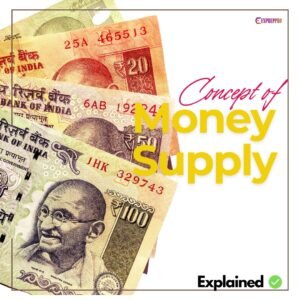
Cryptocurrency is a new form of digital money without any official relation to any sovereign country or currency area’s legal tender. It is a peer-to-peer version of electronic cash.
Bitcoin, created by Satoshi Nakamoto, is considered the first cryptocurrency. However, there was a pioneer in the field of cryptocurrency, the eCash system by DigiCash Inc. However, based on the general conditions of crypto money, Bitcoin is considered the first one.
General Condition For Cryptocurrency
- Should be open-source.
- It should be a single group of persons or entities.
- It should be a global one.
- It should be fast, reliable and secure.
- It should be flexible, scalable and automated.
- Should work peer-to-peer or work without any intermediaries.
eCash
eCash was the product of DigiCash Inc., where payments were transferred online and offline using cryptoprotocols to prevent any errors. It was not open like Bitcoin. The eCash was available via various banks in various countries, such as Finland. This system utilised blind signatures to protect the privacy of its users.
This pioneer, eCash, helped the evolution of cryptocurrencies.
Arise Of Bitcoin
Satoshi Nakamoto published a paper in 2008 for a peer-to-peer electronic cash system. But beyond the name Satoshi, his identity is still a mystery.
Bitcoins run using peer-to-peer decentralised networks and open-source software. Anyone can download and use them without restriction.
Opensource makes the source code available for anyone to use, change, and redistribute for free.
When the first Bitcoin exchange was created, one can purchase 1309.03 BTC with one dollar. On 22nd May 2010, with 10000 BTC, two Pizzas were bought, and this day is remembered as Bitcoin Pizza Day.
Discretionary Decisions In Case Of Cryptocurrencies
As we know, central banks make monetary changes after studying evidence gathered from the economy. Discretionary decisions are not possible in the case of Bitcoin and other cryptocurrencies. However, as a simple rule, it is fixed to keep Bitcoin’s monetary policy smooth.
The final monetary base is fixed at around 21 million bitcoins, and new bitcoins are minted on a planned schedule and paid to users who help secure the network. This decision helps to provide Bitcoins with value due to their scarcity. It incentivises users to connect to the network and help secure it by proving their computational power.
Timeline Of Bitcoin
In November 2010, Slushpool launched the mining pool where miners can jointly mine a block. Once mined, the reward would be shared between miners.
In 2011, Bitpay became the first payment processor that permitted merchants to accept Bitcoin.
In 2013, the First US cryptocurrency regulation came out. In October 2013, the first Bitcoin ATM opened in Vancouver, Canada.
In August 2020, MicroStrategy became the first publicly traded company to hold Bitcoin in its treasury. This decision gave Bitcoin legitimacy. In October 2020, PayPal enabled users to buy, hold and sell Bitcoins.
Byzantine Generals Problem and Cryptocurrency
The Byzantine Generals Problem is an important game theory problem, and the following are the conditions of the problem.
- Let’s assume the Byzantine army is planning an attack.
- The army has several divisions, and each has a general to command. These Generals are stationed outside the city at distances.
- No generals can communicate directly, and they need to depend on couriers.
- For a successful campaign, they need to establish a consensus on the plan and need successful correspondence.
- Now, there is a problem. Misinformation spread by traitors can result in sabotage.
- A coordinated attack will lead to victory, and a non-coordinated attack will result in failure.
In the case of Bitcoin, each node is comparable to generals. Most participating nodes agree on transaction messages and their order and link with previously accepted messages based on defined consensus rules.
If sabotage happens, a hacker can double spend, exclude or include messages which will affect the credit value of the network.
To solve this problem, Bitcoin uses the Bitcoin consensus mechanism.
Bitcoin’s Solution to Byzantine Generals Problem
- Maintain all transactions in an immutable sequence of records in the order of their occurrence.
- Make sure that transactions are easily verifiable in terms of immutability and order and any consensus rule or contract.
- Be able to resolve any race condition that may arise because two records are generated at the same time.
How is cryptocurrency mined?
The method by which new cryptocurrency is created and verified is called mining. In a decentralised system, miners validate transactions without relying on a central authority, using blockchain technology to maintain a public ledger of all transactions.
Each transaction is grouped into blocks. Each block contains a mathematical puzzle.
Using special high-power computers or “nodes”, the miners will find a solution.
The first computer to accurately find the solution can add the block to the blockchain and is rewarded with new bitcoin.
Cryptocurrency And India’s Economy
India is considered one of the fastest-growing cryptocurrency markets. According to the Global Crypto Adoption Index prepared by Chainanalysis, Central & South Asia and Oceania dominate the field.
In 2021, the worldwide use of cryptocurrencies was believed to have increased by 800 per cent, that too in a single year. India ranked second after Vietnam, with an index score of 3.37. The Indian crypto market increased by 641 per cent in a single year.
In 2024, India became first in the overall ranking of the global crypto adoption index. Nigeria came second, and the U.S. came third. Our Neighbours China came 20th, Pakistan 9th, Sri Lanka 72nd, Nepal 71st, and Bangladesh 35th.
By 2025, India’s crypto market is estimated to generate a revenue of 6.4 Billion U.S. dollars.
By 2035, it is anticipated to grow to more than 15 Billion U.S dollars.
The Legal Status Of Cryptocurrencies In India
As of 2025, cryptocurrency is not illegal in India. The RBI once tried to ban them, but the Supreme Court of India lifted the ban.
The RBI and high-level inter-ministerial committee on virtual currencies also favour a cryptocurrency ban.
In India, cryptocurrencies are seen as Virtual Digital Assets, and Section 2(47A) was added to the Income Tax Act to define this term. Income from virtual digital assets is taxed at 30%, and 1% TDS will be applicable on all sell transactions of Virtual Digital Assets.
Recommendations Of The Inter-Ministerial Committee On Virtual Currencies
- All cryptocurrencies are created by sovereign private entities. The committee expressed serious concern because people are investing in these new mushrooming cryptocurrencies.
- Cryptocurrencies have no intrinsic value and cannot serve as currencies. The committee pointed out that private cryptocurrencies should not be allowed.
- A review of global best practices also shows that private cryptocurrencies have not been recognised as legal tender in any jurisdiction.
- The committee recommends banning all cryptocurrencies except those issued by the state.
- In its report, the committee supports the RBI’s measures to prevent the interface of institutions regulated by the RBI from cryptocurrencies.
- The committee recommended the passing of a law banning cryptocurrencies in India.
- It recommended the government set up a standing committee to study this problem more.



